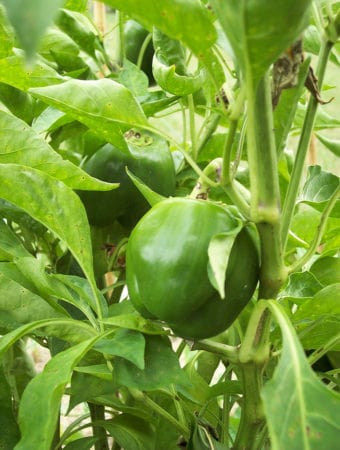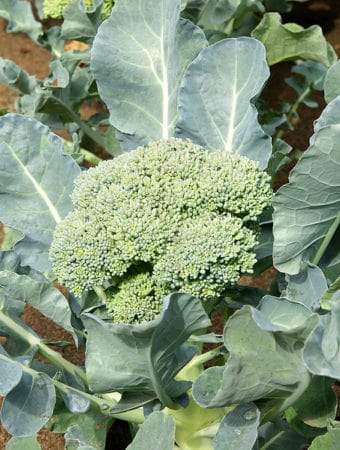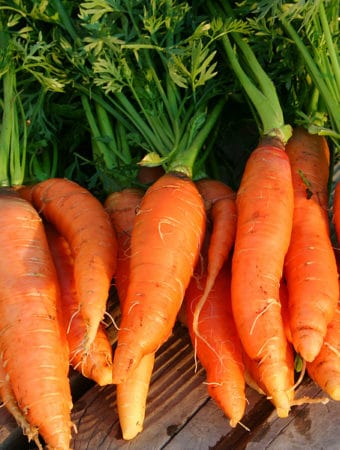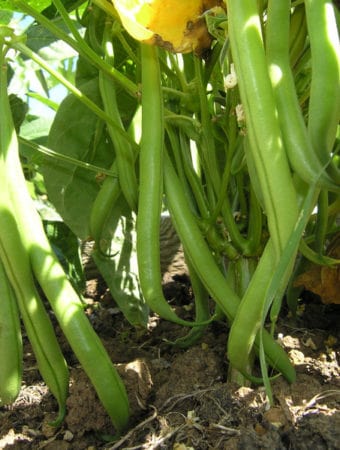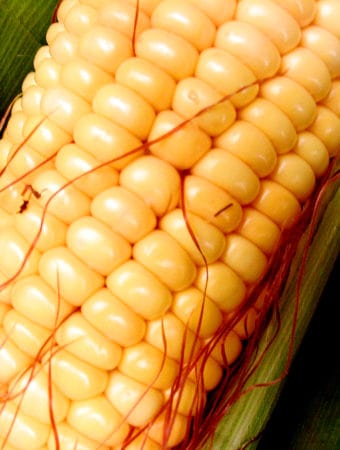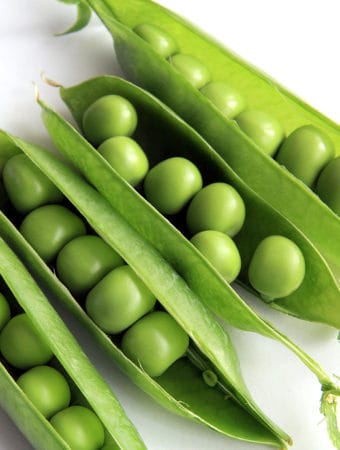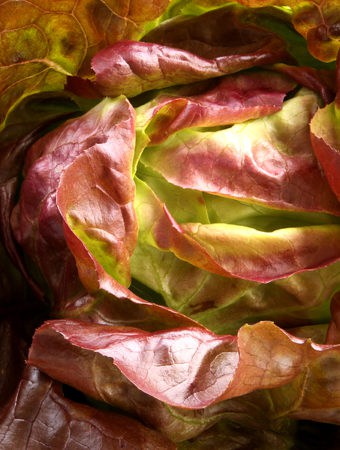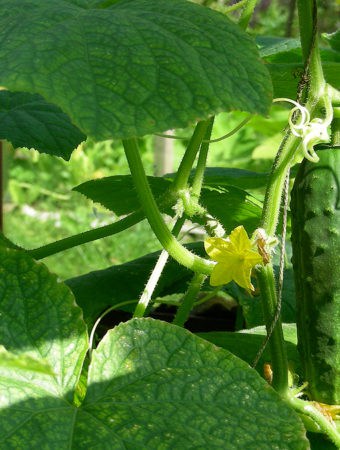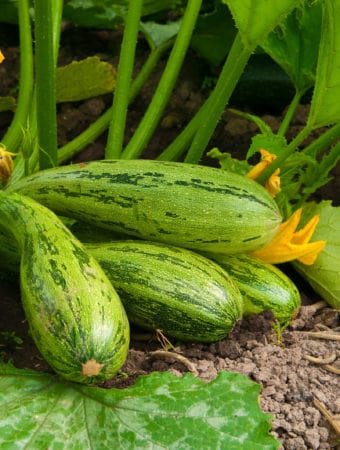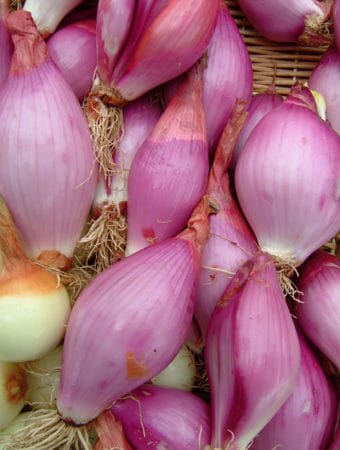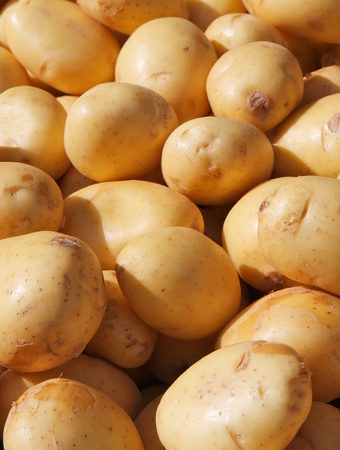The most useful measure of the vegetable garden growing season is soil and air temperature averages.
Warming soil temperatures activate root growth and the uptake of moisture and nutrients. Soil temperature is very closely affected by the air temperature.
As days lengthen in spring and the air temperature warms toward summer, the soil temperature follows. Soil temperature usually lags behind air temperature; the same sunlight that warms the air warms the soil.
With rising air and soil temperatures, vegetable plant growth happens.
Soil and air temperatures
Here are the temperatures needed for growing vegetables:
• Cool-weather vegetables require a minimum average soil temperature of 40° to 50°F (4-10°C) for planting, and an average air temperature range of 60° to 85°F/15-29°C (optimal is 70°F/21°C) for sustained growth. The maximum air temperature for cool-weather crop productivity is 86°F (30°C), above this temperature, cool-weather crops will bolt—meaning flower and set seed–or quit growing.
• Warm-weather vegetables require a minimum average soil temperature of 50°F (10°C) for planting and an average minimum air temperature of 75°F (24°C) for sustained growth. The maximum air temperature for warm-weather crop productivity is 110°F (43°C), above this temperature, most warm-weather crops will die, just as they are likely to die at 32°F (0°C).
Temperature affects a plant’s rate of growth. The higher the soil and air temperature above the minimum, the faster a plant will grow. Two-thirds of the growth time necessary for a plant to reach harvest and maturity should be at or above the optimal air temperature; the remaining one-third should be between the minimum and optimal air temperature.
Soil temperature in spring may lag by days and weeks behind the air temperature as the soil and collected soil moisture are slowly warmed by solar heat after the winter chill. (Soil temperature is affected by solar heat, air temperature, and amount of soil moisture.) The soil generally cools more slowly in autumn for the same reasons (residual solar heat remains in the soil from the summer season and the soil is generally drier in autumn than in spring).
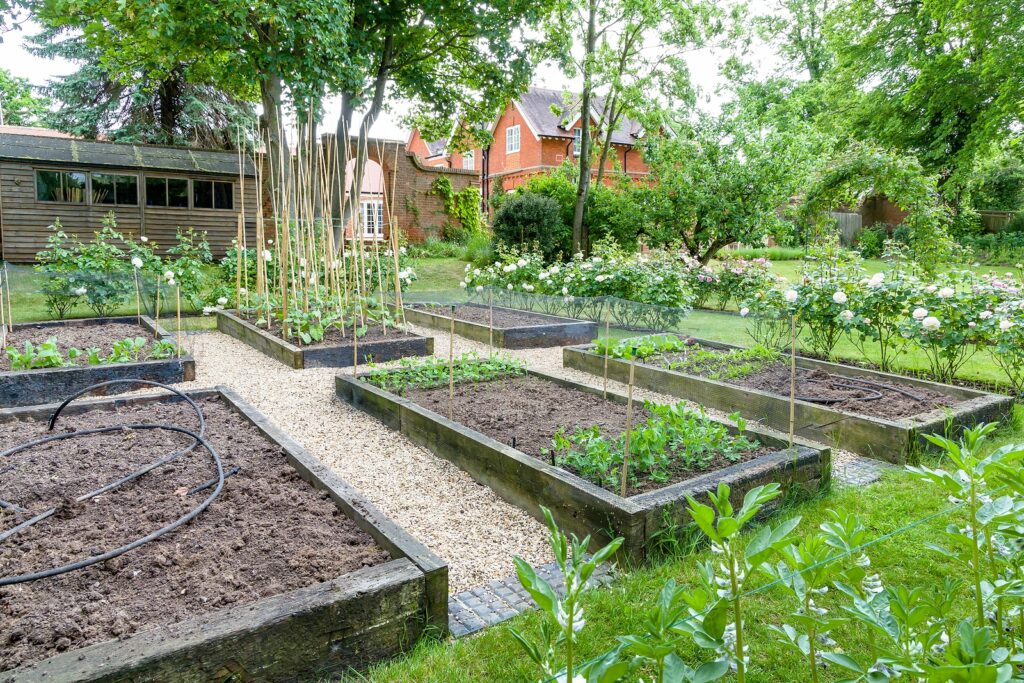
Temperature and growing season
The true growing season for a garden is the total number of consecutive days that the soil and air temperature are warm enough to grow plants–including germination, maturation, and ripening before a killing frost or freeze.
Use the length of the growing season in your garden to set planting dates for early, mid-season, and late-season crops. Use the length of the growing season to plant succession crops; cool-weather spring crops, followed by warm-weather summer crops, followed by cool-weather autumn crops. If you grow crops without protecting them from killing temperatures, your growing season will be determined by nature.
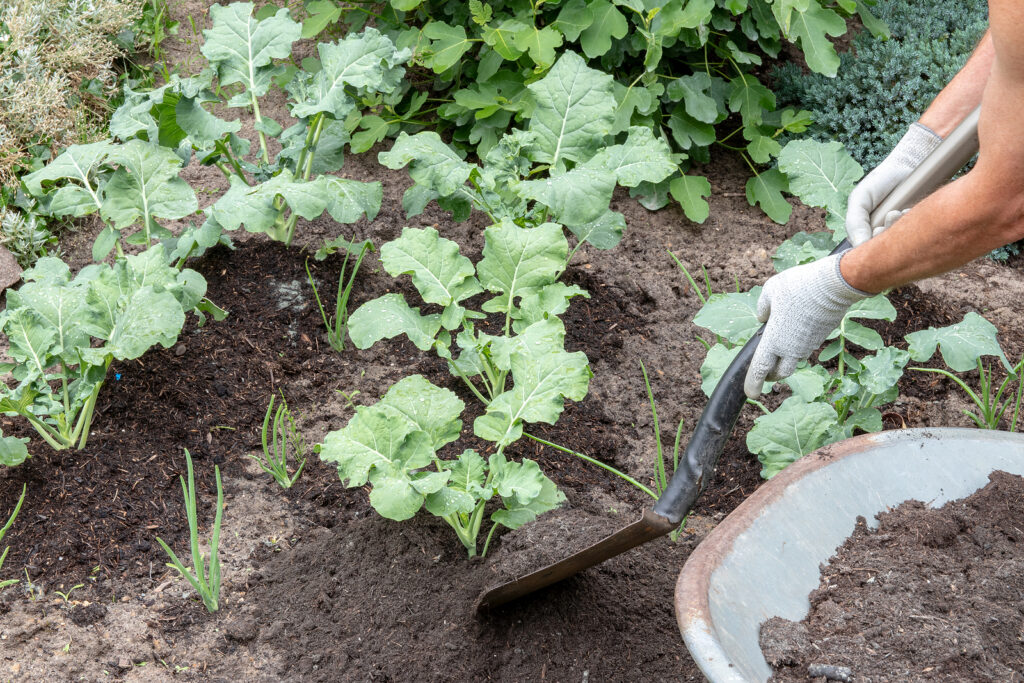
Cool-season hardy vegetables
Here is a list of hardy vegetables. (“Hardy” is a gardening term often used to describe a plant’s ability to withstand cold temperatures.) These crops can be planted—seeds sown or transplants set in the garden—two to four weeks before the average last frost date.
- Asparagus
- Broccoli
- Brussels sprouts
- Cabbage
- Chinese cabbage
- Collards
- Garlic
- Horseradish
- Kale
- Kohlrabi
- Leeks
- Onions
- Parsley
- Peas
- Rhubarb
- Rutabagas
- Spinach
- Turnips
Cool-season half-hardy vegetables
Half-hardy vegetables can tolerate only light freezes–that is short-term exposure to subfreezing temperatures. Half-hardy crops should be planted around the date of the last spring frost.
Here is a list of half-hardy vegetables. Sow the seeds of these crops or set out transplants near the average date of the last frost in your area. Half-hardy crops include:
- Artichokes
- Beets
- Carrots
- Cauliflower
- Celeriac
- Celery
- Chard
- Chinese cabbage
- Chicory
- Cresses
- Endive
- Escarole
- Lettuce
- Mustard
- Parsnips
- Potatoes
- Radishes
- Salsify
- Swiss chard
- Turnips
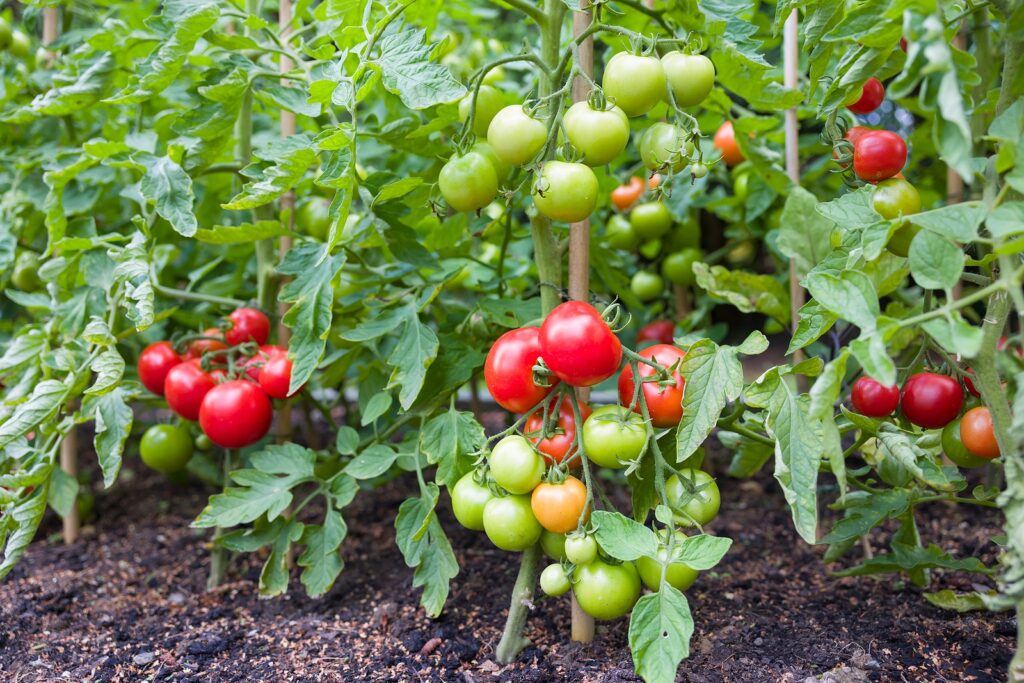
Warm-season tender vegetables
Tender vegetables are best planted one to two weeks after the last frost. (“Tender” is a gardening term for plants that can not withstand cold temperatures.) The fruit and leaves of these crops can be injured by a light frost if planted too early. Tender vegetables include:
- Asparagus peas
- Shell beans
- Snap beans
- Corn
- Cowpeas
- Malabar spinach
- New Zealand spinach
- Okra
- Soybeans
- Sunchokes
- Tomatoes
Warm-season very tender vegetables
Very tender vegetables should not be planted until at least three weeks after the last frost in spring. These crops demand warm temperatures to grow, usually above 70°F (21°C). They can be stunted by temperatures below 50°F (10°C).
Very tender vegetables include:
- Lima beans
- Corn
- Cucumbers
- Eggplant
- Luffa
- Muskmelons
- Peanuts
- Pumpkins
- Peppers
- Sweet potatoes
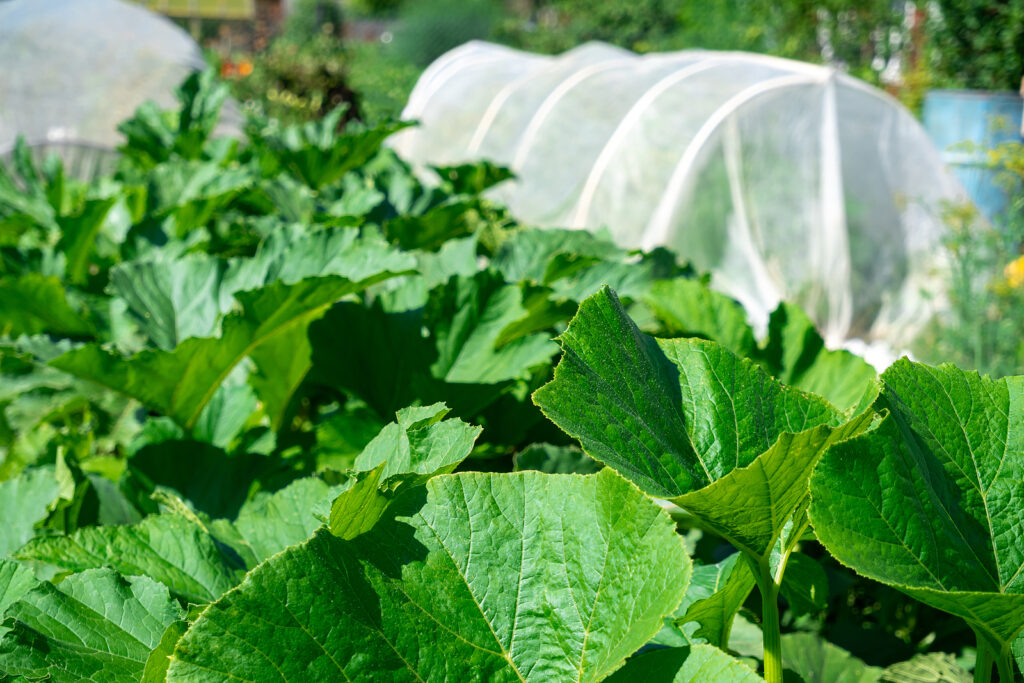
Season extension
Season extension is a term used by gardeners to describe their efforts to grow crops outside of the natural growing season. When temperatures are too cold for vegetable crop growth, crops can be protected under a plastic tunnel, frost blanket, row cover, or greenhouse. Those season-extending devices warm the air and soil and allow crops to grow past their natural growing season. See articles on Season Extension.
Soil temperature and vegetable planting
Vegetable seeds and seedlings require minimum soil temperatures to germinate and grow. Seeds and seedlings require optimal soil temperatures to thrive.
Soil temperature triggers not only seed germination but is an important factor in soil chemistry. Soil chemistry includes the release (dissolution) of mineral nutrients in soil moisture. Mineral nutrients are essential for vegetable plant growth and maturation to harvest.
The ideal or optimal soil temperature for planting and growing most vegetables is 65° to 75°F (18°-24°C).
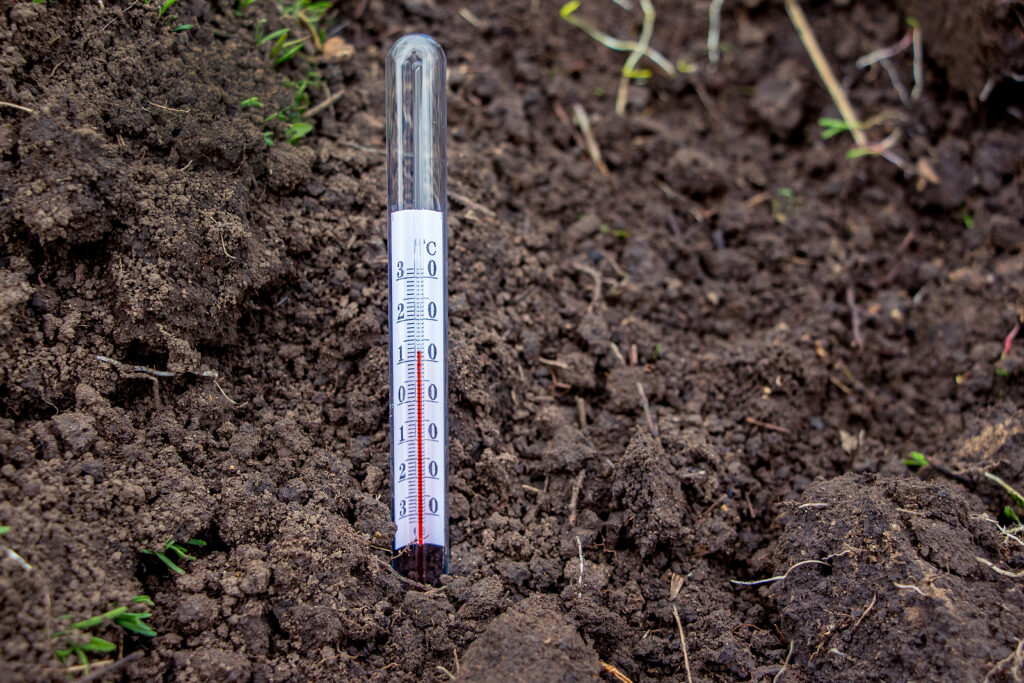
Taking soil temperature
There are two ways to determine if the soil is sufficiently warm for planting; first, simply take a handful of planting bed soil in your hand—if it feels chilly, it is; second, you can use a basic thermometer to take the soil’s temperature. Place the thermometer in a hole about 4 inches deep, mark the spot with a small stake or irrigation flag, cover the thermometer, and then come back in about 15 minutes to take the reading. Soil temperature should be about 65°F at 4 inches below the soil surface for seeds and seedlings to get started.
Soil temperature can be measured with a soil thermometer or gauge. Most home vegetable gardeners use a soil thermometer—a thermometer attached to a metal probe several inches long which is inserted into the soil.
The soil temperature for seed sowing should be taken between 1 and 3 inches deep. The soil temperature for transplants should be taken at 4 to 6 inches deep.
Commonly the temperature reading is taken after the thermometer has been in the soil for a couple of minutes.
Soil temperature is best taken in the early morning when the soil is coolest and not yet warmed under the day’s sun.
Take the soil temperature for at least three consecutive days and then average the results. Don’t depend on just one reading.
Planting and soil temperature
Vegetable seeds can be sown in the garden early in spring before the soil has warmed to optimal germination temperatures. If you sow early before temperatures are ideal, you cannot expect optimal germination.
Optimal germination and growing temperatures may not come until late spring or early summer. In regions where the growing season is short, waiting for optimal soil temperatures may not be practical or realistic. A 70 percent germination rate is often considered both practical and realistic.
You can use the minimum soil temperature for germination and the optimal soil temperature for germination to decide about what soil temperature you want to get started sowing seeds and setting out transplants.
Minimum soil temperature for seed sowing and germination
- 35°F: lettuce, onion, parsnip, spinach.
- 40°F: beet, broccoli, Brussels sprouts, cabbage, carrot, cauliflower, collards, Asian greens, Chinese cabbage, fava beans, kale, kohlrabi, mustard, arugula, radish, Swiss chard, turnip, pea, radish, rutabaga.
- 50°F: asparagus, celery, celeriac, corn, tomato.
- 60°F: bean, cucumber, eggplant, muskmelon, pepper, pumpkin, squash, watermelon.
Soil temperature needed for 70% germination
- 45°F: beets, lettuce, parsley, spinach.
- 50°F: broccoli, Brussels sprouts, cabbage, carrot, cauliflower, collards, Asian greens, Chinese cabbage, fava beans, kale, kohlrabi, mustard, arugula, radish, Swiss chard, turnip, pea, radish, rutabaga.
- 55°F: cabbage, corn, Swiss chard, tomatoes.
- 65°F: cucumbers, peppers.
- 70°F: beans, cantaloupe, melons, squash.
- 75°F: eggplant, okra, pumpkins.
Optimal soil temperature for germination (near 100% germination)
- 65°F: parsnip.
- 70°F: spinach.
- 75°F: asparagus, lettuce, onion, parsley.
- 80°F: bean, carrot.
- 85°F: beet, cabbage, eggplant, pepper, radish, Swiss chard, tomato, turnip.
- 90°F: muskmelon.
- 95°F: corn, cucumber, pumpkin, squash, watermelon.
For specific soil temperature requirements for crops, you are planting see the How to Grow articles for each vegetable and herb. There are more than 60 crops covered in the How to Grow category.
Workable soil test for direct seed sowing and transplanting
Before soil thermometers were used in gardens and farms, the common method of determining when to plant was soil workability. (This is the tried-and-true old-fashioned way to know when to plant.)
The soil is workable and ready for seed sowing or planting if it passes the Workable Soil Test. Here’s the test: squeeze a handful of soil in the palm of your hand; when you open your hand if the soil remains a wet or very moist clump, it is not workable. Let the soil dry. If the soil crumbles from your hand with a touch, it is workable.
When the soil is workable in spring, you can:
- Direct sow: collards, kale, lettuce, parsnip, peas, radish, rutabaga, spinach, turnips.
- Transplant out: broccoli, Brussels sprouts, cabbage, onion.
Of course, once the soil is workable in spring, it will continue to warm. Often, old-time farmers would look to lilacs and other spring-flowering plants to decide when to plant. For more on this see the articles on Phenology: Nature Planting Signals for Vegetables.
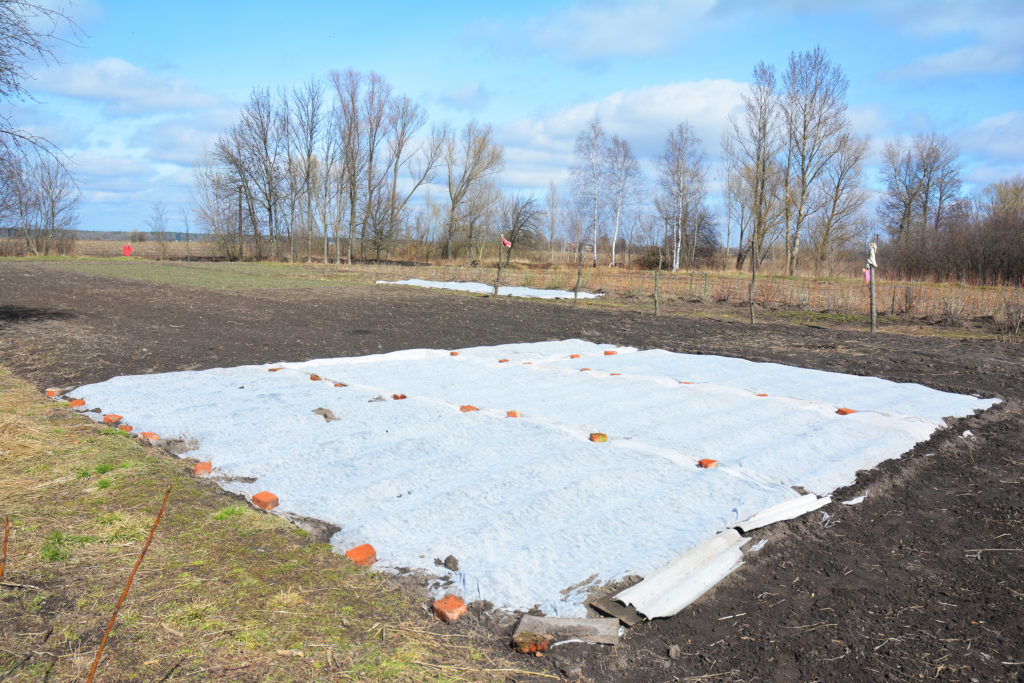
Pre-warm the soil before planting vegetables
Pre-warm cold soil before sowing or transplanting warm-weather crops into the garden. Black or clear plastic sheeting is a simple and inexpensive way to warm the soil and get a jump on the growing season. You can also dig, loosen, and turn over the soil in planting beds so that solar heat reaches it.
Warm-weather seeds and seedlings require the soil to be 65° to 75°F for best germination and early growth. Peppers, melons, cucumbers, summer squashes, winter squashes, and pumpkins grow best in warm soil. Soil temperature more than air temperature will determine how early you can set out these crops. Air temperature for warm-season crops should not fall below 55°F at night, 60°F or slightly warmer is optimal.
Using plastic sheeting to warm the soil
If you use clear or black plastic to warm planting beds, pull it tight over the soil to eliminate as much air as possible. The air between solar-heated plastic and chilly soil can insulate the soil and prevent it from warming. Plastic sheeting heated by solar energy can raise soil temperature by as much as 16°F on a cloudless day.
Soil stores solar heat; two to six weeks of solar heating planting beds can raise the temperature of late winter and early spring soil to the warmth required by seeds and transplants. Each day a few additional degrees of residual solar heat will be stored in the soil.
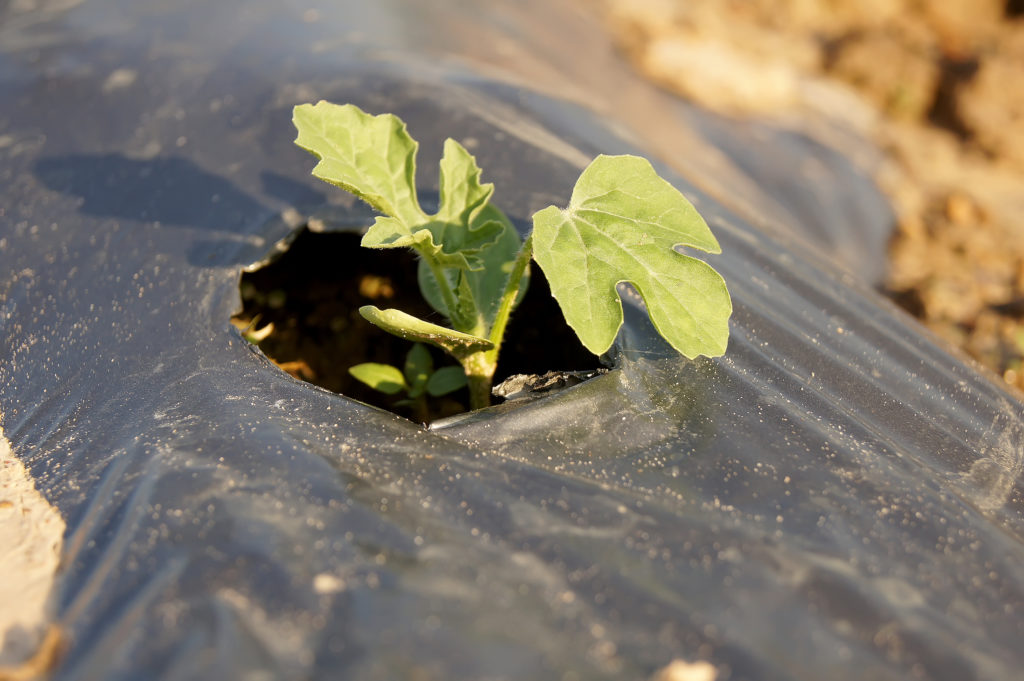
Planting through plastic sheeting
Once the soil has warmed, you can cut a slit in the plastic and sow seed in the soil or set transplants. Plastic can stay in place for the whole season in most regions—only in extremely hot regions might the soil grow too hot for plant growth. Plastic sheeting across planting beds through the season will protect vining crops such as melons that creep across the garden from soil-borne pests and diseases.
Other ways to pre-warm the soil
• Floating row covers, plastic tunnels, and cold frames can also be set in place over planting beds to pre-warm the soil. Warming the soil under these season extenders may take several days more than plastic sheeting stretched tight over the soil.
• Mounded or raised wide rows running east and west can be planted; solar heat will more quickly warm raised mounds and beds than planting beds flat in the ground. East and west beds will be evenly warmed from early until late in the day.
• V-shaped trenches for sowing seed or setting transplants can be dug in advance of planting. Mound the soil to the north side of the trench then allow the soil beneath to warm over the course of a couple of weeks before backfilling the trench once the soil has warmed.
• Hills or mounds can be made for crops planted in clusters. Make small mounds for corn and beans. Make larger, wider mounds for melons, sweet potatoes, cucumbers, and squashes. These crops will do best on mounds 6 to 8 inches high and 3 feet wide.
Related articles of interest:
Vegetable Planting Times Roadmap
Know Your Garden Growing Season
Starting Your Organic Vegetable Garden
What Every Vegetable Garden Needs
How Big Should Your Vegetable Garden Be?
Garden Planning Books at Amazon:
- Vegetable Garden Almanac & Planner
- Kitchen Garden Grower’s Guide Vegetable Encyclopedia
- Vegetable Garden Grower’s Guide
- Tomato Grower’s Answer Book



